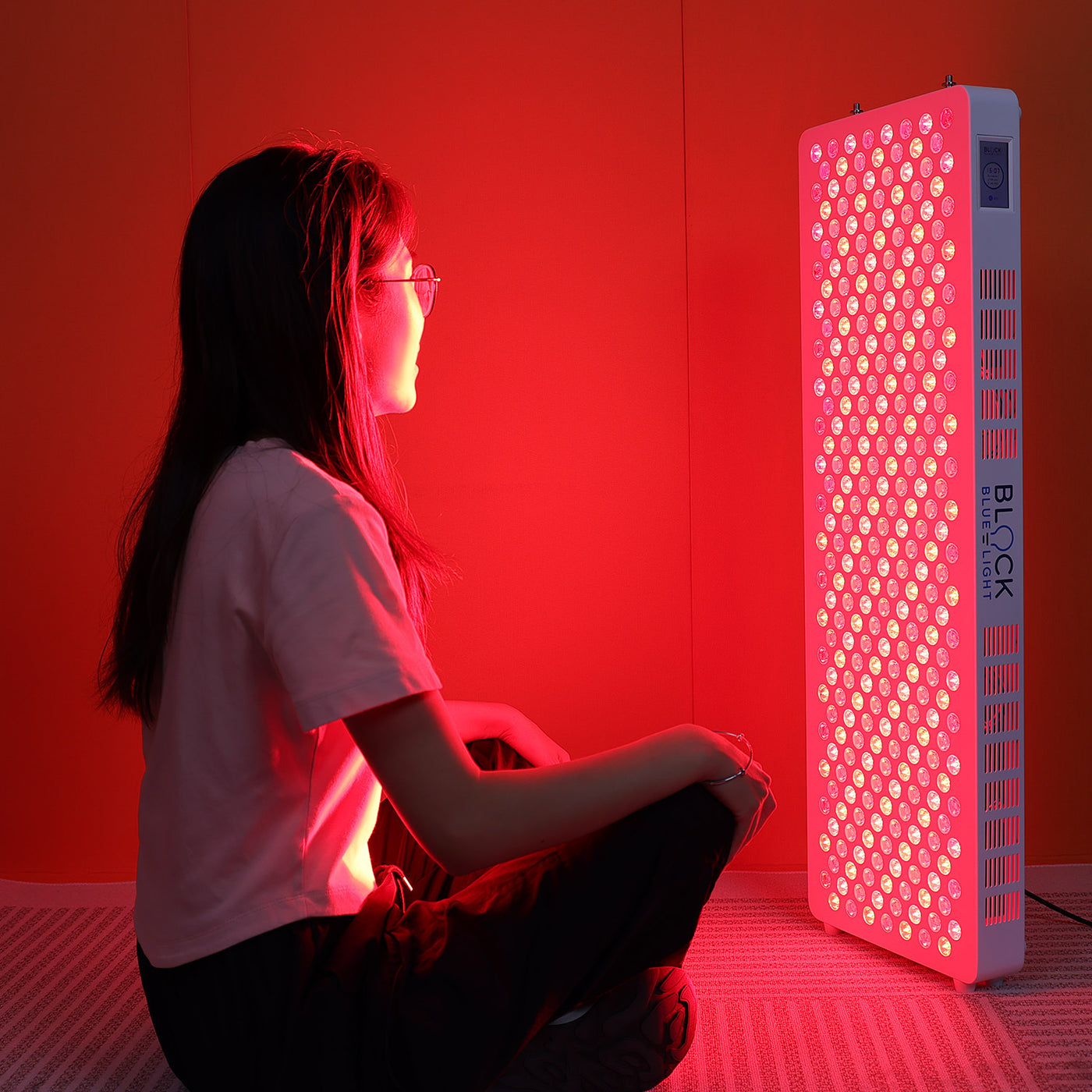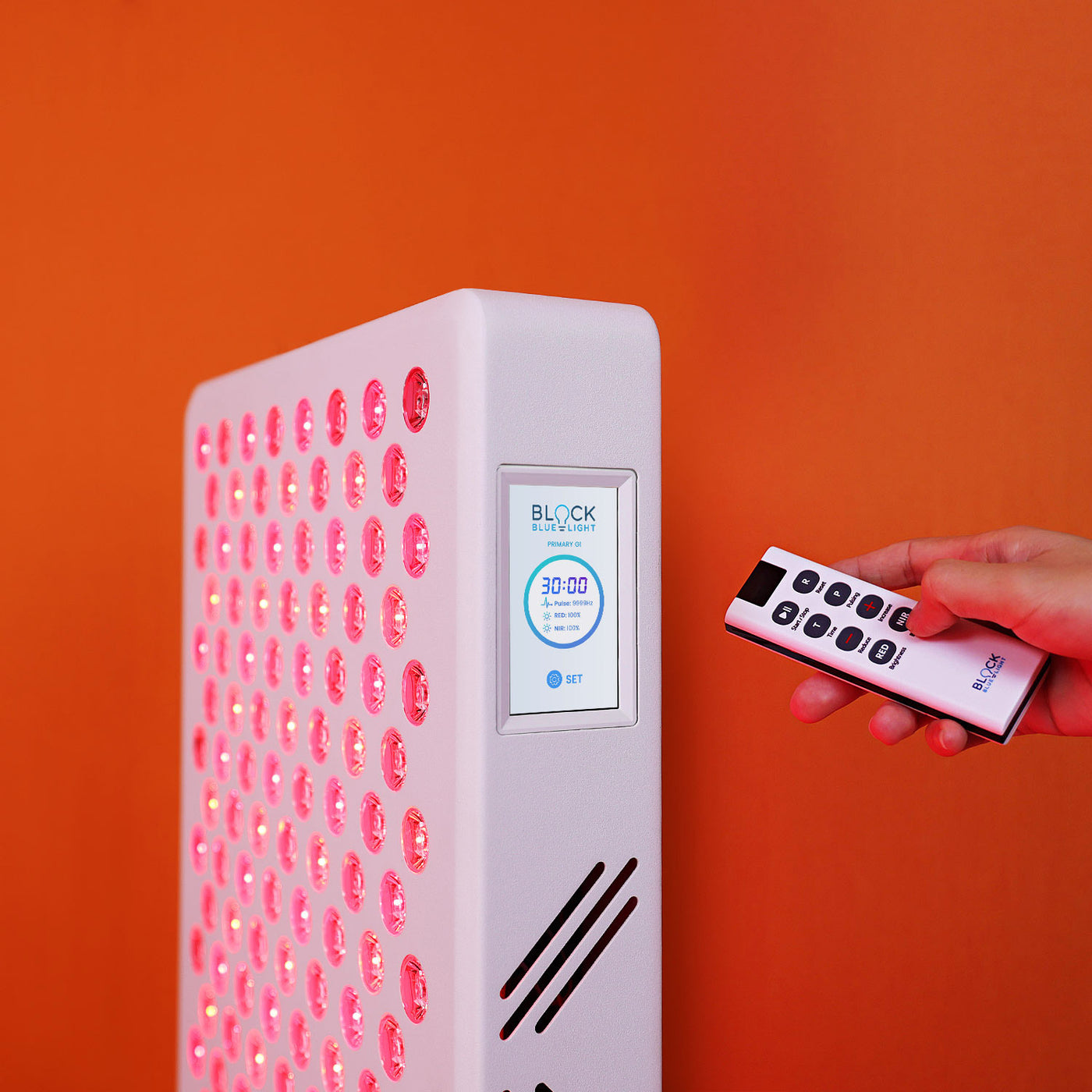
What Is Red Light Therapy?
Red Light Therapy is a non-invasive treatment that uses specific wavelengths of red and near-infrared light to penetrate the skin, offering a variety of health benefits. This therapy, originally developed by NASA for plant growth experiments in space, has since been extensively researched and is widely used for skin rejuvenation, muscle recovery, pain relief, and more.

Red Light Therapy has been the subject of numerous scientific studies, with over 10,000 studies supporting its efficacy. Research has shown that red light therapy can significantly improve cellular metabolism, reduce inflammation, and enhance tissue repair.
The photochemical reaction triggered by red light therapy is similar to photosynthesis in plants, where light energy is converted into chemical energy, promoting cellular health and function.
Red light therapy works by delivering red 620-660nm) and near-infrared (810-850nm) light through the skin, which is absorbed by the mitochondria in cells. Mitochondria, known as the powerhouses of cells, produce Adenosine Triphosphate (ATP), the energy currency of cells.
When red light is absorbed, it enhances mitochondrial function, leading to increased ATP production. This boost in cellular energy enhances cellular repair, regeneration, and overall function.
Red Light Therapy uses targeted light to improve cellular energy production, aiding in healing, reducing inflammation, and enhancing skin health
Red Light Therapy uses targeted light to improve cellular energy production, aiding in healing, reducing inflammation, and enhancing skin health
Benefits of Red Light Therapy
Benefits of Red Light Therapy

Skin Health
- Collagen Production: Red light therapy stimulates collagen production, reducing wrinkles and improving skin texture and elasticity.
- Wound Healing: Promotes faster healing of wounds and reduces scarring.

Pain Relief
- Inflammation Reduction: Helps reduce inflammation and alleviate conditions like arthritis and chronic pain.
- Muscle Recovery: Accelerates muscle recovery post-exercise by reducing muscle soreness and fatigue.

Anti-Aging
- Reduced Wrinkles: By boosting collagen, red light therapy diminishes the appearance of fine lines and wrinkles.
- Improved Skin Tone: Enhances overall skin tone and reduces age spots.

Enhanced Cell Function
- Increased Energy: Boosts cellular energy production, enhancing overall cellular function.
- Improved Circulation: Enhances blood flow, which supports better oxygen and nutrient delivery to tissues.
Choosing the Best Red Light Therapy Device
Choosing the Best Red Light Therapy Device
Many companies offer red light therapy devices that don't have sufficient power and the most bioactive bend of wavelengths. At BlockBlueLight, we pride ourselves on being industry leaders. We produce the best some of the best devices on the market, designed with cutting-edge technology and superior quality. When selecting a Red Light Therapy device for home use, consider the following factors:

- Wavelengths: Ensure the device emits light in the optimal wavelengths and is a multi-wavelength device to maximize benefits. Look for devices that include wavelengths of 630nm, 660nm, 810nm, 830nm, and 850nm for comprehensive therapy.
- Power Output: Higher irradiance output devices can deliver more energy to the tissues in a shorter amount of time.
- Treatment Area: Larger panels are suitable for full-body treatments, while smaller, handheld devices are ideal for targeted therapy.
- Quality and Safety: Look for devices that are FDA-registered, ultra low in EMFs, and are flicker free to ensure they are safe and effective.
How To Use Red Light Therapy at Home
How To Use Red Light Therapy at Home

- Select the Right Device: Choose a red light device that suits your specific needs. Handheld devices are ideal for targeting small areas, while larger red light panels can treat more extensive body parts.
- Proper Placement: Position the device at the recommended distance from the area you would like to treat, typically this is 6 - 12 inches. The closer to the device the shorter the treatment time.
- Duration and Frequency: Generally when doing red light therapy at home sessions last between 10-20 minutes, and it’s recommended to use the therapy 3-5 times a week for optimal results. Follow the user guidelines for your specific device for more detailed recomendations.
Practical Tips for Effective Red Light Therapy Treatments
Practical Tips for Effective Red Light Therapy Treatments

To maximize the benefits of red light therapy, follow these practical tips:
- Consistency is Key: Regular use is essential to achieve the best results. Incorporate red light therapy sessions into your routine and stick to it.
- Clean Skin: Ensure your skin is clean and free of lotions or oils before treatment, as these can block the light from penetrating effectively.
- Stay Hydrated: Drinking plenty of water before and after sessions helps maintain skin hydration and supports cellular function.
- Patience: While some benefits can be seen quickly, others may take several weeks to become noticeable. Be patient and persistent with your treatment regimen.
Red Light Therapy is a versatile and scientifically supported treatment that offers numerous health benefits, from improving skin health and reducing pain to enhancing overall cellular function. With the availability of home devices, incorporating red light therapy at home into your wellness routine has never been easier. By understanding the science behind red light therapy and following best practices, you can experience significant improvements in your skin appearance, pain levels, and overall well-being.
Compare BlockBlueLight Red Light Therapy Devices
Red Light Therapy Articles
Red Light Therapy Articles
To learn more about what red light therapy is in more detail and how you might benefit from it we recommend checking out our detailed blog articles:
How Does Red Light Therapy Work?
4 Incredible Reasons Red Light Therapy Is An Effective Acne Treatment
Easy Guide To Red Light Therapy At Home For Skin Benefits
Can I Use Red Light Therapy While Pregnant?
Shedding Light on Red Light Therapy: Is it Safe and Effective?










